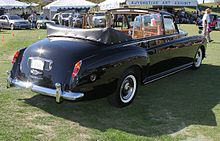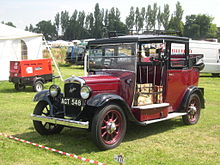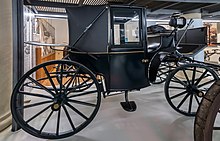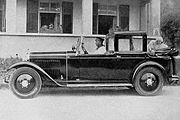

A landaulet, also known as a landaulette, is a car body style where the rear passengers are covered by a convertible top. [1] [2] [3] Often the driver is separated from the rear passengers by a division, [4] as with a limousine.
Contents
During the first half of the 20th century, taxicabs were often landaulets, with models such as the Austin 12/4 and the Checker Model G and early Checker Model A being a common sight in larger cities.
Around the middle of the 20th century landaulets were built for public figures such as heads of state to use for formal processions or parades when they wished to be more visible to large crowds. Open cars are now less frequently used, due to security concerns.












